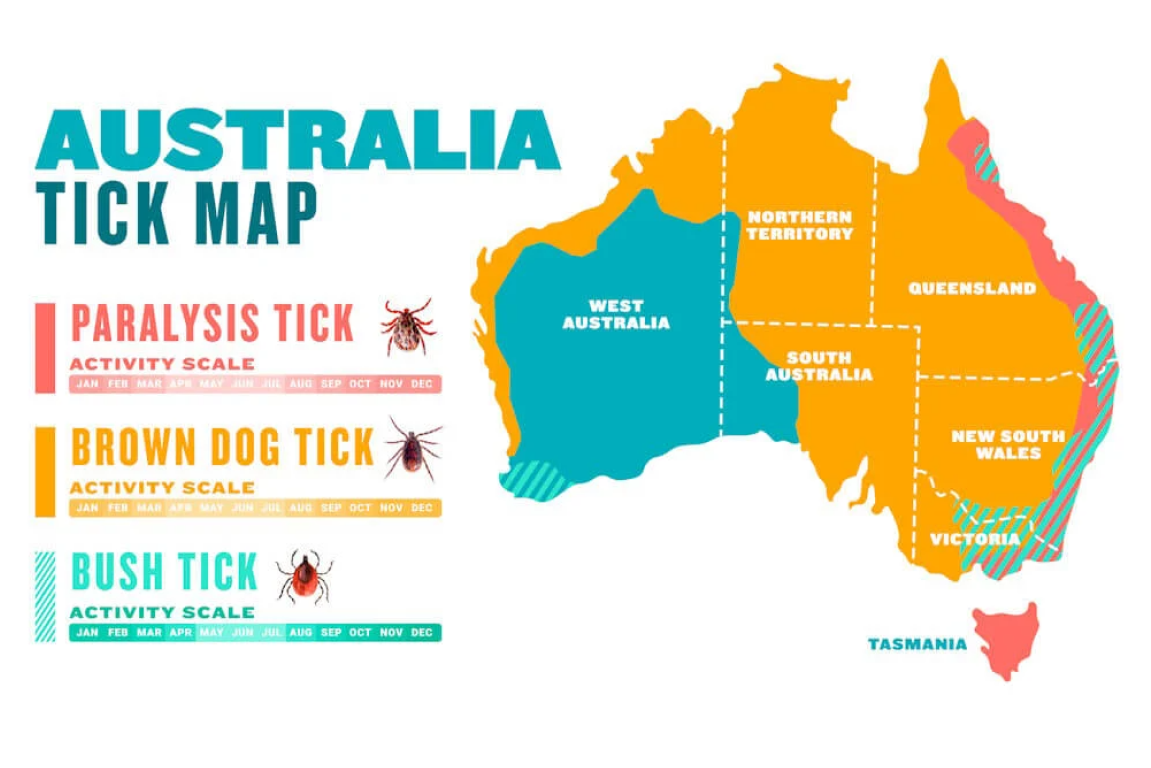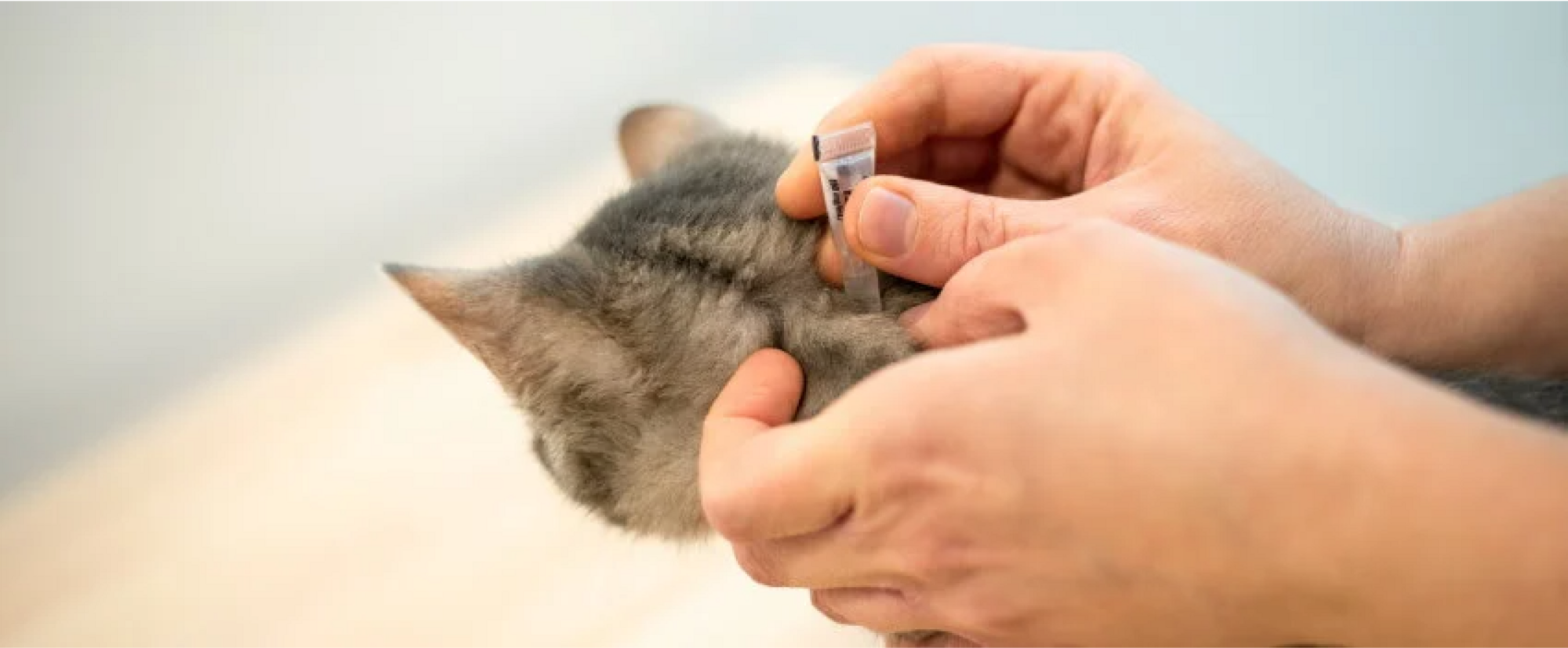Last Updated: 06/05/2025
Which Flea and Worming Product Does Your Cat Need?
Confused about which flea and worming product your cat needs? Find out how to ensure your cat is properly protected in our Vet-written guide.
Author: Dr Belinda Stancombe BVSc (Hons)
Reading Time: 4 minutes - short read
With an ever-growing number of flea, tick and worming prevention products for pets released each year, it's not surprising that Australian pet owners are often left feeling a little confused.
Which products treat which parasites? Does newer mean better? Which flea prevention is actually the most effective, and most importantly - which is the safest?
We've put together a helpful guide to parasites and prevention products, so that you can be sure you're selecting the right product for your cat!
NexGard Spectra offers the first true All-in-One parasite protection for cats.
It provides next-generation monthly spot-on parasite protection against common external parasites and internal worms, ensuring your feline friend stays healthy and happy.
- NexGard Spectra protects your cat against:
- Fleas
- Paralysis Ticks
- Bush Ticks
- Mange and Ear Mites
- Heartworm disease
- Intestinal worms like Roundworm, Hookworm and Tapeworm
- Lungworm
Your Guide to Worming, Flea and Tick Treatments for Cats
1. Parasites of Concern in Australia: Know your enemies!


Fleas - Small wingless bloodsucking insects that live on your cat's body and lay eggs in the environment. These guys cause intense itching and dermatitis.

Ticks - Another wingless bloodsucking insect. There are 3 species in Australia: The Paralysis Tick, The Brown Dog Tick, and the Bush Tick. However unlike fleas, paralysis ticks inject a paralysing toxin which can be lethal. Only the Paralysis Tick is venomous.

Heartworm - blood-dwelling worms transmitted by mosquitoes. While cats aren't the natural host of heartworm, they can still be infected by a mosquito which has recently fed off an infected dog.

Intestinal worms - Worms that live in the gastrointestinal tract including hookworm, roundworm and tapeworm plus whipworm in dogs.
Learn more about common parasites with our article Fleas, Ticks and Worming Guide For Cats.
2. What Coverage Does Your Cat Actually Need?

Some parasites may not pose a risk to your pet, depending on your area or lifestyle.
Do I need to cover ticks?
Paralysis ticks live along the eastern coastline of Australia, however cases have been known to occur as far south as Melbourne. Ticks can be seasonal, which means they are less prevalent risk from April to August - however this changes year by year.
The Brown Dog Tick and Bush Tick are more widespread throughout Australia, and though they do not cause paralysis, they can transmit deadly diseases such as Ehrlichiosis.
For cats living along the east coast of Australia at risk of ticks, we recommend using isoxazoline-based products such as NexGard Spectra, Bravecto, Bravecto Plus and Revolution Plus. Although indoor cats are at less risk of exposure to ticks than those that venture outdoors, prevention is better than cure so tick prevention is still recommended in affected areas.

Do I really need to cover for tapeworm?
With so many preventatives lacking tapeworm coverage (such as Bravecto Plus and Revolution Plus), many pet owners wonder if tapeworm is really that important.
Tapeworm is most commonly transmitted to cats from fleas and hunting and eating prey such as lizards and rodents. Ultimately, we recommend tapeworm prevention for every cat. Products that cover tapeworm include Drontal, Paragard, Milbemax, Milpro and topical Profender.
3. Is there an 'All-In-One?

What treatment covers for all parasites?
Until recently there was no true all-in-one product for cats. Fortunately, NexGard Spectra has now hit the market as the first true all-in-one that protects your cat against ticks, fleas, heartworm and intestinal worms, including tapeworm!
There are some other great products that come very close including Bravecto Plus and Revolution Plus which cover fleas, heartworm, intestinal worms - and ticks. The only major parasite not covered is tapeworm.
4. Options for Full Coverage

To help you decide which product might work for you, we've outlined a few combination options below.
Table Component Missing
* When using multiple spot on products ensure you allow a few days between applications to prevent skin irritation
For a worming guide for kittens under 12 weeks of age, see our veterinary written New Kitten Guide.
Remember that these are just examples. You should consult with your veterinarian before administering different combinations of treatments.
Still confused? See our Flea and Tick Quiz which interactively takes you through relevant steps and picks a combination for you!
5. Comparison Table of Cat Parasite Preventatives
See our product comparison below for an easy guide to flea, tick and worming treatments and their coverage.
Table Component Missing
* Please Note: The monthly worming recommendation is based on an adult cats not receiving any additional worming control (such as in an all in one product). For cats on all in one products, we recommend 3-monthly tapeworming prevention with either a tapeworm tablet (purchasable from your vet) or an all-wormer. For a worming guide for kittens under 12 weeks of age, see our veterinary written article New Kitten Guide.
6. Other less-common Parasites

In some areas your pets will need protection from other irritating insects.
Ear mites Otodectes, are the most common mite seen in cats in Australia, occuring mostly in kittens or immunocompromised adult cats. Products that protect against ear mites include Bravecto, Bravecto Plus, Advocate, Revolution Plus and Revolution.
Cats can also be infected by lungworms. These parasites live in the lungs and can cause serious airway disease especially in kittens and older cats. Infection occurs through exposure to lungworm larvae, either through drinking dirty water or by hunting and eating infected animals such as snails, slugs, frogs, birds or cockroaches. Products that protect cats against lungworm include Advocate, Neovet and Profender.
Whatever parasite problem you're facing, there is a treatment available to save the day. Always read the label on medications carefully to ensure that your pet will be fully covered against all common parasites.
For example, some medications that appear to treat intestinal worms do not necessarily treat tapeworm, and a separate treatment may be required. If you are unsure as to which treatment path to embark on, it is always best to consult with a professional.
Still confused? Why not Ask a Pet Circle Vet for some guidance. We're here and happy to help!
Further Reading
Want to read more? Check out our other articles:
Want to know more? Check out our Discover Page for more tips from our expert vets on keeping your pets happy and healthy.